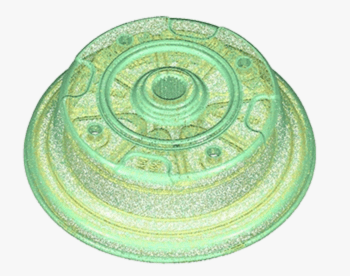3D Scanning for Reverse Engineering. Why Does it Matter?

When 3D scanning came along, it turned the manufacturing industry on its head. Rapid product development (RPD) all but left traditional methods in the dust.
But let’s start from the beginning. What is 3D scanning for reverse engineering?
It is the process of obtaining a digital CAD model from points acquired by scanning and digitizing existing parts or products. Reverse engineering, also known as geometry re-creation, is a valuable and necessary step when the use of a tool has outlived its life cycle. In production environments tooling revisions, modifications, and repair are often made to extend tool life and achieve conforming parts. When it comes time to replace this customized tool, its print or CAD no longer matches reality.
That’s why 3D scanning for reverse engineering offers substantial benefits for manufacturers. It preserves legacy part and tooling and reduces research and development, therefore reducing time to market.
Legacy Part & Tooling Preservation
In most manufacturing scenarios, a component’s initial design intent has been partially lost as a result of production process variation or tool degradation. What was once a daunting and sometimes impossible task to do by hand, is now performed quickly and easily with 3D scanning services. Collecting three-dimensional data from your legacy part or tooling allows for CAD models to be easily created to facilitate changes, corrections, and advancements to the product or tooling design. Reverse engineering is invaluable when parts have been hand modified for improved styling, ergonomics or performance and updated CAD models need to be produced.
Reduce Time to Market
In an intensely competitive global market, manufacturers are constantly seeking new ways to shorten lead times to market their product. To stay ahead of their competition, they have to be able to satisfy fast delivery needs, without jeopardizing quality or increasing costs.
RPD is a manufacturing culture that promotes new product development in the shortest time possible. Techniques such as rapid prototyping and rapid tooling have completely modernized the manufacturing process and customer expectations.
A part that would typically take eight to 16 weeks to create, can now be produced as a high-precision model in just a couple of days or even a few hours. The customer is then able to do a fit check using the model and approve production with confidence.
Examples
When a blade for an aircraft needs to be replaced, often the replacement, CAD data, or original tooling is unavailable or non-existent. In many cases, this is because the original manufacturer is no longer in business. Reverse engineering of parts enables aircraft to keep flying and machines to keep running.
For injection-molding companies, reverse engineering can considerably reduce tool and die development times. By using reverse engineering, a three-dimensional product or model can be quickly captured in digital form, re-modeled, and exported for rapid prototyping/tooling or rapid manufacturing.
A designer of a smartphone case needs to know where all the buttons, cameras and audio jacks are, as well as the organic shape of the phone. They are not likely going to get this data from Apple or Samsung directly, but it needs to be accurate.
These are just a few of the ways reverse engineering can make life easier for manufacturers — and IIA can help.
Learn more about IIA’s 3D Laser Scanning and Reverse Engineering Services.
READ MORE
Reverse Engineering: When You Need to Get from Point B to Point A




